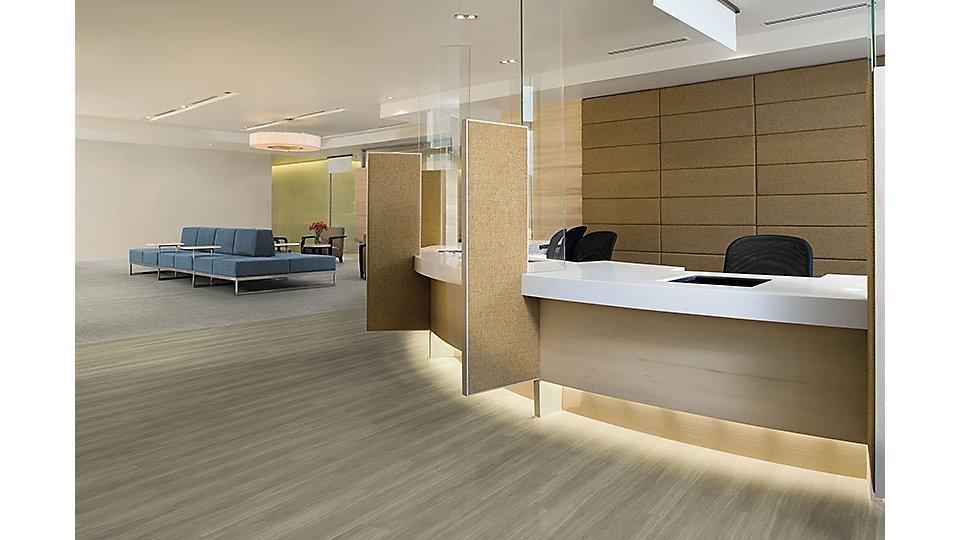Ecocentricity Blog: Vinyl Is in Style
By: John A. Lanier

Ecocentricity Blog: Vinyl is in Style
A long-running joke in our family is that Ray Anderson had three children, not just two. First came my mother, Mary Anne. A few years later, Ray and my grandmother welcomed my Aunt Harriet to the family. Then a decade or so later, Ray finally had a son, and he named him Interface, Inc.
I guess that makes the largest carpet tile manufacturer on the planet my uncle. And a few weeks ago, Uncle Interface had an exciting sustainability announcement – but this time, it had nothing to do with carpet tile.
Interface announced that its luxury vinyl tile (LVT) product line is now made with 39% pre-consumer recycled content. Before I talk about that accomplishment (and it is an accomplishment, I assure you), first let me explain what LVT is and why Interface makes it.
Though carpet tile has historically been (and remains) the flagship floorcovering product that Interface makes and sells, they always keep a finger on the pulse of the market. Just as in fashion, floorcovering styles and preferences change over time and across market segments like commercial and residential, and Interface wants to adjust as necessary to meet market demand.
In the past decade or so, market demand has shifted somewhat toward hard surfaces. I’m sure you’re familiar with the classics in that category, like hardwood and ceramic tile floors, but LVT in particular has been growing in popularity. It is modular like carpet tile, but made mostly of polyvinyl chloride (PVC). It is very durable and easy to clean, and its modularity makes it interchangeable, easy to install, and easy to selectively replace. Most importantly, because LVT usually has a decoration film underneath its transparent “wearlayer” on top, LVT can be designed to look like a wide range of things. In other words, when you look at the product, you’re looking at a printed image or pattern, so LVT can imitate most anything (even hardwood planks). To get a sense of what I mean, here’s Interface’s LVT product offering page.
Unfortunately, LVT has historically been a poor environmental choice when buying floorcovering. Creating the PVC it’s made of can result in human exposure to toxins, and the product does not biodegrade. Further, until now, almost all of the LVT offerings in the market were entirely virgin (meaning 0% recycled content).
That’s what makes Interface’s announcement so impressive. When they made the decision to enter the LVT market, Interface was committed to pioneering more sustainable manufacturing processes and figuring out how to close the loop on the product. Getting to 39% recycled content is an important milestone on the way to hopefully higher and higher numbers. In addition, all Interface LVT can be taken back at the end of its lifespan to be 100% recycled into the backing of Interface carpet tiles. If you want to learn more, here’s further information about the sustainability of Interface LVT.
I’m glad to see that my grandfather’s company remains committed to constant environmental improvement. As a relative newcomer to this market-segment, they’ve already surpassed their competitors in making the least environmentally-harmful LVT product, and I know they won’t stop there. As with everything they do, true sustainability is the ultimate goal. Good job Uncle Interface, I’m proud of you!
This blog is available weekly via email subscription. Click here to subscribe.

